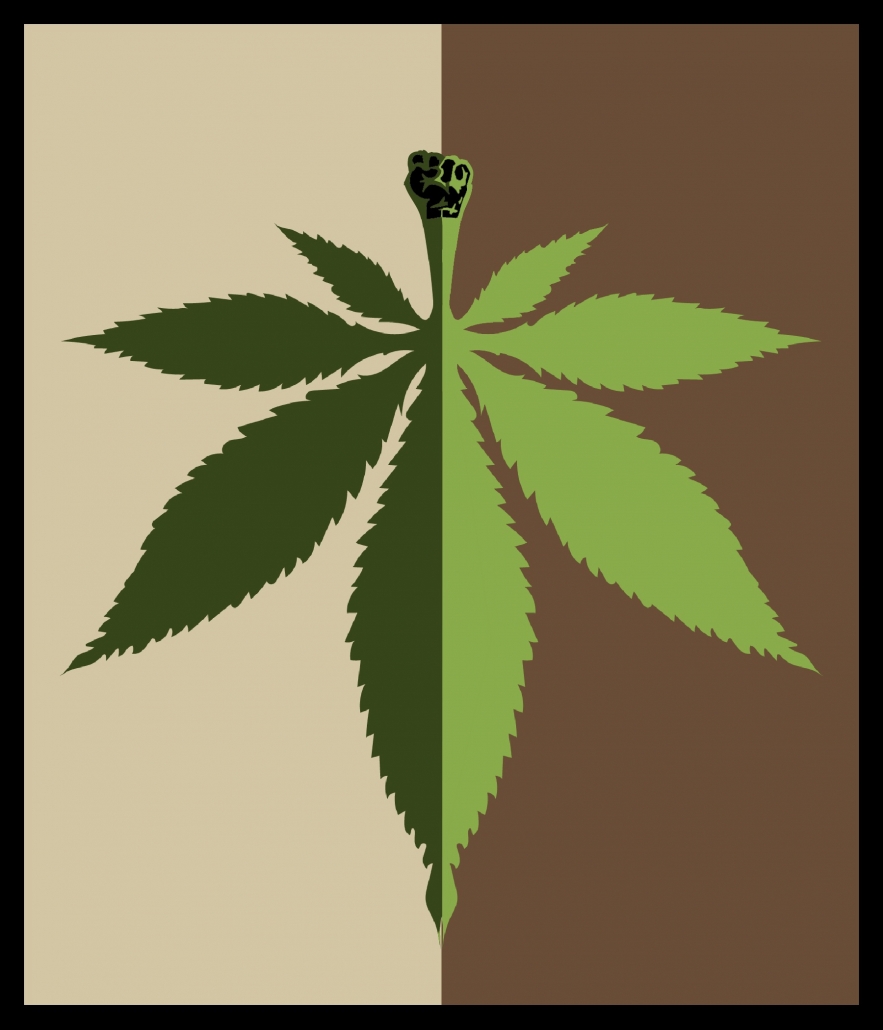To Be Blunt: Cannabis is an integral part of jazz history in America

You can’t talk about mainstream American popular culture without discussing the appropriation of Black popular culture into the hegemony. It is well-known that the former wouldn’t exist if not for the blueprint of the latter.
Cannabis and its use, like most cultural phenomena, became popularized in America by immigrants of color in enclaves, predominantly people from the Caribbean who settled in New Orleans and people fleeing from the Mexican Revolution.
Weed’s history is inextricably linked to a complex, multi-faceted relationship with race, slavery, colonization and criminalization. While the plant is believed to have originated in Central Asia in 500 B.C., it was later spread to the Middle East and the Americas through trade and imperialism. Cannabis was used to placate slaves and was also the basis for hemp plantations in the American colonies.
First imposed on Black communities in the Caribbean, namely Jamaica, cannabis was soon adopted recreationally, becoming a cultural and religious staple. Then, with the arrival of Jamaican immigrants in the early 20th century and the creation of distinct cultural districts like Storyville in New Orleans, jazz was born.
Cannabis helped the Jazz Age flourish, serving as a conduit for creativity, music production and performance. The 1920-30s saw the beginnings of cannabis slang and cultural development, specifically in Black communities. Joints were sold outside tea pads or cannabis bars. Musicians would light up on tea, reefer, grass — codes for cannabis, since the drug was vilified nationally and on the cusp of criminalization — singing tributes to the substance.
Jazz musician Cab Calloway, who regularly frequented New York City’s famous Cotton Club, sang many odes to cannabis, including “Reefer Man,” which includes lines like “If he trades you dimes for nickels / And calls watermelons pickles / Then you know you’re talking to the reefer man.” Blues singer Trixie Smith recorded the iconic cannabis tribute “Jack, I’m Mellow,” which is featured as the intro song on the since-canceled Netflix show “Disjointed.”
Louis Armstrong, arguably the most famous jazz musician of all time, was a well-known viper, the name given to jazz musicians who smoked cannabis (after the hissing sound produced while inhaling smoke). Armstrong first tried cannabis — which he called “the gage” as was commonplace slang at the time — in the 1920s and used the substance throughout his career, before performances and recordings.

While his cannabis use was debated and rumored for the majority of his career, Armstrong eventually opened up about his love affair with weed to biographer Max Jones near the end of his life, explaining that he had to give it up as the Prohibition Era dawned.
Armstrong was an ardent supporter of cannabis’s medicinal and recreational benefits and was once jailed for nine days in Downtown Los Angeles City Jail after detectives caught him smoking at a parking garage (times haven’t changed much, huh?). There’s even a legend that then-Vice President Richard Nixon accidentally smuggled cannabis into the U.S. for Armstrong after saying he didn’t have to go through customs (look it up, it’s hilarious).
Known for its time-slowing effects, cannabis changed jazz musicians’ perception of their own performances, lowering their inhibitions and allowing them to experiment creatively — playing with beats, sounds and rhythm. Jazz, then, quickly became the hallmark of infectious, dance-inducing and joy-filling music.
Music psychologist Daniel Levitin wrote in his book “The World in Six Songs” that tetrahydrocannabinol, known as THC, the psychoactive compound in cannabis, disrupts short-term memory and enables musicians to be fully in the moment, allowing them to connect with their music and zero in on each note they play.
Breaking barriers during the Jim Crow Era, Armstrong heavily influenced popular culture for decades to come. While politicians demonized cannabis and jazz, which they called “Satanic” — and by association its musicians — Armstrong’s music dominated common American household radios.
Black activists have historically been at the forefront of cannabis culture and the pot revolution, as evidenced by Armstrong and other jazz vipers. Now, the mantle has been passed to influential cannabis industry figures like Snoop Dogg, Wiz Khalifa and Whoopi Goldberg, who work to empower their communities through weed entrepreneurship.
Newcomers like Hope Wiseman, the youngest Black dispensary owner at 25, continue this trend, as do Dasheeda “The WeedHead” Dawson and Mary Pryor, two prominent Black female cannabis entrepreneurs and advocates. Pryor, who created the education firm Cannaclusive with two other women of color, hopes to address the lack of diversity within the burgeoning industry.
So as you enjoy cannabis today and for many days to come, recognize that cannabis has been wielded as a weapon against Black and brown communities — first as a tool for enslavement, later as a method of criminalization and now as a means of disenfranchisement, gentrification and cultural appropriation.
Cannabis is inherently intertwined with Black history, and it is imperative to reopen up spaces within the industry, our mainstream culture and society for Black creatives and entrepreneurs to grow and reclaim what was denied and stolen from them.
Natalie Oganesyan is a junior writing about weed culture and politics. She is also the Associate Managing Editor at the Daily Trojan. Her column, “To Be Blunt,” runs every other Friday.

